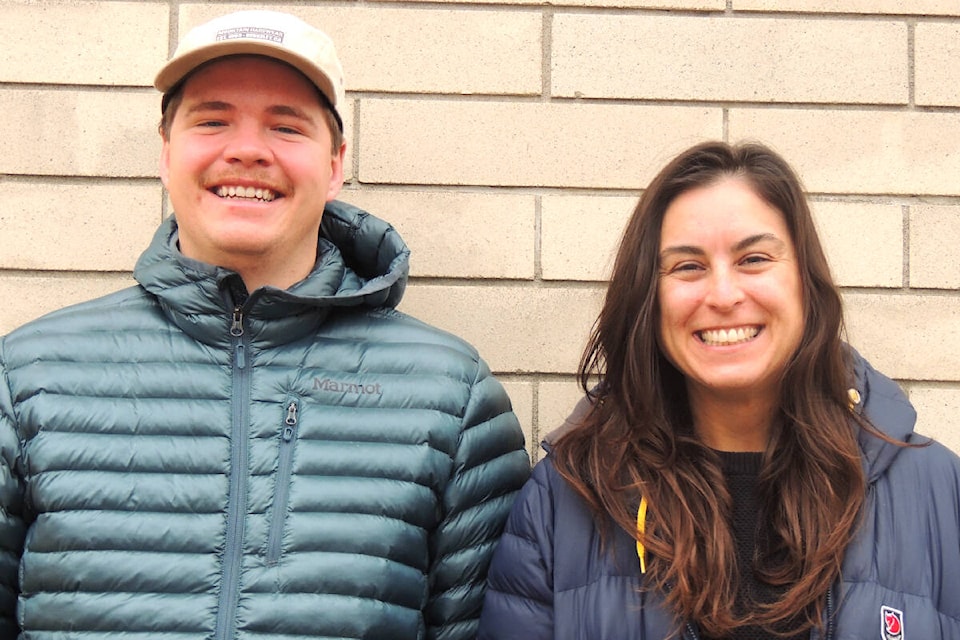Submitted by Angèle Karosi and Jeremy Tresierra, Selkirk College Recreation, Fish and Wildlife students
In August 2021, Grand Forks, British Columbia, a town that relies on both the logging and agricultural industry, saw 75 per cent of the collared California bighorn sheep, known as the Granby herd, succumb to the bluetongue virus. Prior to die-off, Wildsheep Society of BC, long-time stakeholders in the conservation of the Granby herd, estimated the herd size to be 200-300 individuals.
Research done in the 90s suggested that to maintain a viable herd there must be more than 100 individuals to manage genetic variability, but demographic and environmental factors also play a significant role. With the recent die off, the Granby herd (previously one of the healthiest herds in British Columbia) may no longer have this viability putting the herd at greater risk of other diseases like Mycoplasma ovipneumoniae, a virus carried by domestic sheep and fatal to wild sheep, particularly lambs.
Prior to European settlement, bighorn sheep roamed western North America by the millions. By the 20th century herds had drastically been reduced to only a small fraction of what they once were. This was due to several reasons including expansion and settlement, unregulated hunting, and infectious disease, in part, spread by domestic animals. Bighorn sheep are very susceptible to infection when in proximity or overlapping range land with domestic livestock. The recent bluetongue disease that struck the Granby herd is one example of a disease that can be transmitted from domestic animals like sheep or cattle, to wild sheep.
Historically, bighorn sheep in British Columbia would have been one metapopulation with minimal barriers restricting movement amongst herds. While recovery efforts from non-profit organizations like Southern Interior Land Trust and Wildsheep Society of British Columbia have restored isolated herds within much of their historic range, due to human settlement and environmental fragmentation herd connection still remains limited. Infrastructure and development such as highways, forest harvesting, industry access roads, agriculture, and recreation have caused much of this division.
Additionally, fire suppression undertaken in the 20th century, has resulted in forest encroachment and increased canopy cover of native grasslands, further reducing bighorn sheep habitat. The reintroduction of fire and prescription burns to the landscape will help species recovery by opening the forest canopy and restoring grassland ecosystems, enhancing bighorn sheep habitat and travel corridors.
Finally, bighorn sheep are sensitive to direct human impacts such as recreation. The autumn rut, over wintering, and spring calving, are high stress times when they are most vulnerable. Wildlife in areas heavily frequented by humans, expend energy on avoidance rather than feeding or reproducing. With increasing interest in backcountry recreation and adventure tourism, even the most remote movement corridors and seasonal ranges are becoming threatened.
While currently the bighorn sheep population is listed as provincially threatened, efforts are being made to tackle issues such as habitat fragmentation and degradation. The benefits of fire restoration are gaining popularity and becoming a more widely used forest management tool. Ecosystem-based management and policies requiring reclamation and remediation from industry disturbance are also gaining momentum. Private land stewardship is another toolkit in the environmental field for garnering direct community involvement, hastening conservation efforts. The Creston frog-bear conservation corridor is a successful example of this type of management. With proper education and partnerships, agriculture, logging and recreation industries may just be the next major allies and stakeholders in the environmental movement.
Angèle Karosi and Jeremy Tresierra are second year Recreation, Fish and Wildlife students at Selkirk College in Castlegar British Columbia.
READ MORE: Whitewater Ski Resort to add new chairlift in 2023
newsroom@castlegarnews.com
Like us on Facebook and follow us on Twitter
